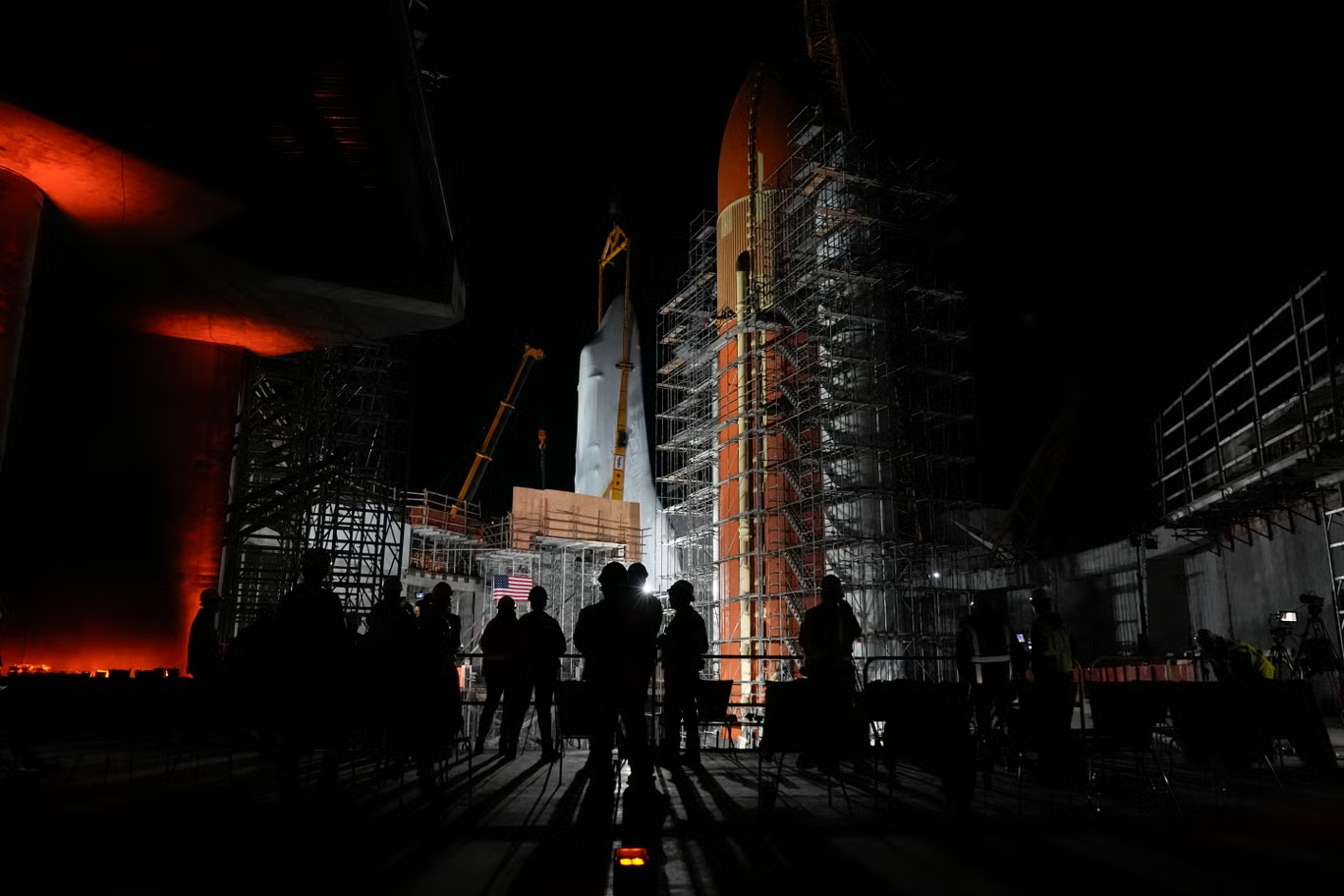Space Shuttle Endeavour was installed in the launch position with the help of two huge cranes at the California Science Center. It is not going to space, but will become the central exhibit of the new museum.

Endeavour Shuttle Installation Plan
Early on Tuesday morning, the Space Shuttle Endeavour was installed nose up in the United States. This is its last resting place in the future museum. However, the operation was unique, and it could have been prevented by strong winds.
Plans for the future relocation and installation of the pearl of the new Samuel Austin Aerospace Center at the demonstration site have been developed for more than a decade. First, a pair of cranes lifted the shuttle from a horizontal position to a vertical one. The spacecraft would be attached to a large metal frame that supported it during travel. Then an 11-storey crane lifted Endeavour’s tail, and a 40-storey crawler crane repeated the same with its nose.
After the shuttle was sent to the stars, the shorter crane was disconnected, and the taller one carefully turned the spacecraft to its final position and lowered it to attach to the giant orange outer tank. The latter was attached to double solid-fuel rocket boosters, which are connected to the foundation of the exhibit.
Difficulties in installing the spacecraft
Since Endeavour is essentially an airframe with a huge wingspan, it was difficult to steer it down in strong winds. During the launches, the shuttle was connected to an external tank and solid-fuel boosters at the Kennedy Space Center in Florida. The assembly took place in the NASA building — one of the largest in the world, towering over 50 floors and equipped with a large number of cranes and platforms from which it was possible to work.
In Los Angeles, crews had to quickly build, disassemble and reformat scaffolding to ensure proper connection. During the arrival of the external tank, there were cases when the crew had to hurry, remove some parts of the scaffolding and change their configuration while they were lowering.
The main ascent of the orbiter took one night. In contrast, it took two nights to lift the outer tank. The first was delayed by the wind, although crews were able to start rising before stopping work in the middle of the morning. On the second night, the tank was lowered further, between solid rocket boosters.
The last resting place of the legendary spacecraft
A veteran of 25 space flights from 1992 to 2011, Endeavour made its last flight in 2012, completing a journey through difficult terrain at Los Angeles International Airport before making a three-day trek through the streets of the city to the California Science Center. For 11 years, Endeavour exhibited in a temporary hangar, the Samuel Oschin Pavilion, while the museum worked to find a permanent place to exhibit.
The shuttle was removed from the exhibition on December 31. The configuration of its placement is so high that the new museum will rise 20 floors to make room for it. To ensure an unobstructed view, the building was designed without any vertical supports except the walls. It will have a diagonal grid designed by the engineering firm Arup and covered with a stainless steel facade.
After the shuttle is installed, the rest of the museum will be built around it. Given the construction schedule and the additional time required to install the exhibits, it may take several years before it is open to visitors.
According to www.independent.co.uk
Follow us on Twitter to get the most interesting space news in time
https://twitter.com/ust_magazin


